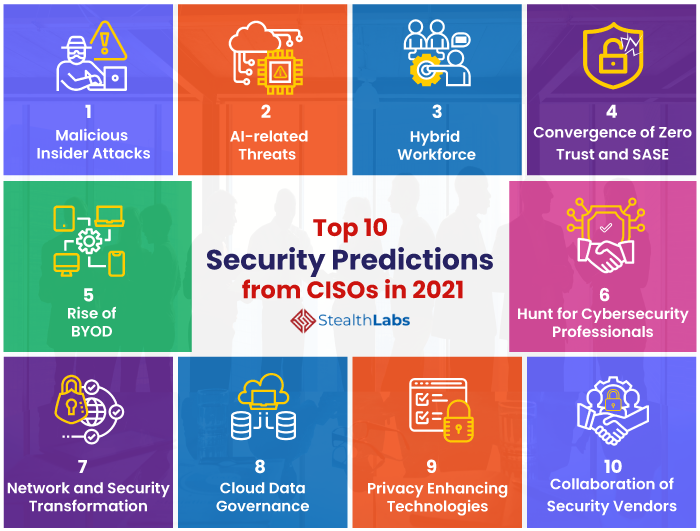Top Cybersecurity Forecasts for 2024: Remain Ahead of Arising Dangers
As we approach 2024, the cybersecurity landscape is poised for substantial change, driven by emerging hazards that companies must not only expect yet also tactically address. With regulatory adjustments on the horizon and an essential emphasis on cybersecurity training, it is imperative for organizations to reassess their approaches to continue to be resilient.
Surge of AI-Driven Attacks
As organizations increasingly take on expert system technologies, the potential for AI-driven strikes is coming to be a paramount concern in cybersecurity. Cybercriminals are leveraging AI to enhance the elegance and efficacy of their attacks, developing a landscape where conventional safety and security steps might falter. These strikes can manipulate artificial intelligence formulas to recognize vulnerabilities in systems and networks, bring about much more targeted and destructive violations.
AI can automate the reconnaissance stage of an assault, enabling foes to collect large quantities of data rapidly (cyber resilience). This capability not just shortens the time needed to release an attack but also increases its precision, making it harder for protectors to prepare for and reduce dangers. In addition, AI can be made use of to develop convincing phishing plans, create deepfake web content, or adjust information, additionally making complex the cybersecurity landscape
Organizations should focus on the integration of AI-driven cybersecurity options to respond to these arising dangers. By utilizing innovative threat detection systems, companies can improve their ability to determine and reduce the effects of AI-generated attacks in genuine time. Continuous investment in training and recognition programs is likewise critical, as it gears up workers to identify and react to prospective AI-driven dangers properly.
Raised Ransomware Sophistication
The surge of AI-driven assaults is not the only fad improving the cybersecurity landscape; ransomware attacks have additionally progressed, coming to be significantly sophisticated and targeted. As cybercriminals refine their approaches, companies face heightened threats that require adaptive approaches to reduce prospective damages.
Modern ransomware risks currently take advantage of progressed methods, such as dual extortion, where attackers not just encrypt information however additionally intimidate to leakage delicate information if their demands are not fulfilled. This includes an additional layer of stress on sufferers, usually engaging them to pay ransom money to secure their track records and client trust.
In addition, making use of automated devices and equipment discovering algorithms by wrongdoers has structured the assault procedure, allowing them to determine vulnerabilities more effectively and personalize their techniques against certain targets. Such growths have actually resulted in a startling rise of strikes on vital facilities, medical care systems, and supply chains, stressing the demand for robust cybersecurity structures that focus on real-time risk detection and action.
To respond to these developing risks, organizations must purchase extensive training, advanced protection innovations, and case reaction prepares that include lessons picked up from past ransomware incidents, ensuring they continue to be one action ahead of significantly intricate attacks.
Development of IoT Vulnerabilities
With the quick expansion of the Net of Things (IoT), susceptabilities related to these interconnected gadgets have actually ended up being a crucial worry for organizations and individuals alike. The spreading of smart tools, from home appliances to industrial sensing units, has produced a large assault surface area for cybercriminals. Many IoT gadgets are released with marginal safety protocols, usually utilizing default passwords or obsolete firmware, making them susceptible to exploitation.
As tools become interconnected, the capacity for large strikes rises. Jeopardized IoT devices can serve as entry factors for opponents to penetrate more safe and secure networks or launch Distributed Rejection of Service (DDoS) attacks. The website here lack of standardization in IoT security determines more worsens these susceptabilities, as differing producers implement varying degrees of safety
Moreover, the boosting elegance of malware targeting IoT gadgets presents significant threats. Threat actors are continuously creating new techniques to exploit these weaknesses, causing prospective data breaches and unauthorized access to delicate details. As we relocate into 2024, organizations must prioritize IoT safety and security, executing robust actions to guard their networks and alleviate the dangers related to this rapidly expanding landscape.
Regulative Modifications Influencing Safety

In 2024, we expect to see more rigid compliance demands for companies, particularly those that make or deploy IoT gadgets. The introduction of guidelines such as the European Union's Cyber Resilience Act and updates to existing structures like the NIST Cybersecurity Framework will certainly emphasize security by layout. Organizations will be mandated to apply durable security actions from the first stages of product advancement, guaranteeing an aggressive stance versus prospective vulnerabilities.
Moreover, governing bodies are most likely to enforce substantial penalties for non-compliance, engaging services to prioritize cybersecurity financial investments. This shift will certainly not only boost the general safety and security stance of organizations yet will likewise cultivate a society of responsibility in shielding user information. As regulations tighten, the onus will progressively fall on firms to show conformity and safeguard versus the ever-evolving threats in the digital landscape.
Focus on Cybersecurity Training
Organizations' commitment to cybersecurity Check This Out training is ending up being progressively critical as threats evolve and attack vectors multiply. With cybercriminals continually creating innovative strategies, it is extremely important for staff members in all degrees to comprehend the dangers and recognize their role in mitigating them. Comprehensive training programs equip team with the expertise and abilities required to identify potential visit the site threats, such as phishing strikes, social design methods, and malware.
In addition, a society of cybersecurity recognition cultivates alertness amongst staff members, lowering the probability of human mistake, which stays a substantial susceptability in lots of organizations. Consistently upgraded training modules that mirror the most up to date dangers will ensure that team stay enlightened and efficient in responding properly.


In 2024, companies will likely prioritize continuous education and learning and simulation workouts, enabling employees to practice their response to real-world scenarios. Partnership with cybersecurity specialists for customized training solutions may likewise end up being a lot more typical. Ultimately, investing in employee training not only enhances a company's protection posture yet additionally grows an aggressive technique to cybersecurity, strengthening the concept that safety is a shared responsibility throughout the business.
Final Thought
In conclusion, the cybersecurity landscape in 2024 will certainly be shaped by the rise of AI-driven strikes, progressively sophisticated ransomware methods, and the growth of vulnerabilities linked with IoT tools. A strong focus on detailed cybersecurity training will be important in cultivating a business society resilient to arising risks.